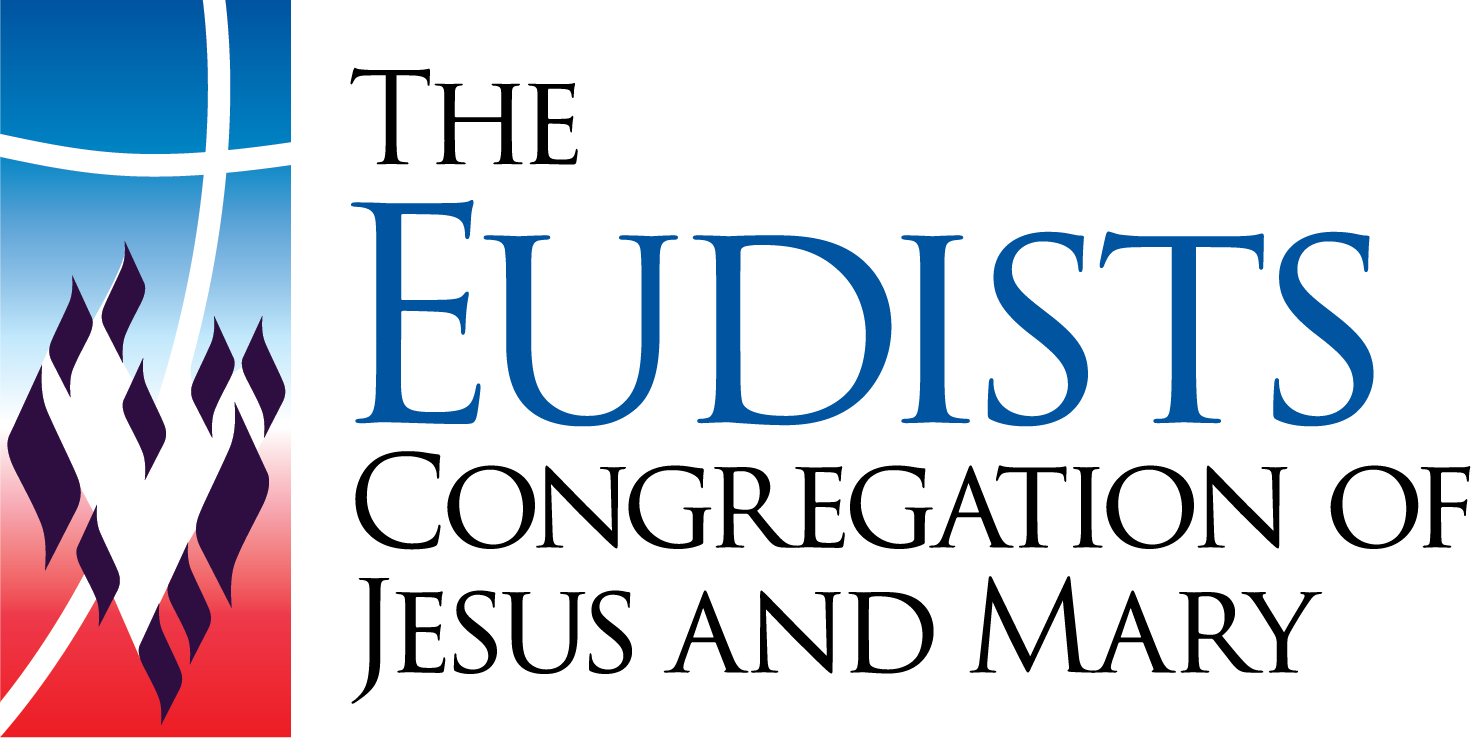About the Eudist Family
During his lifetime, St. John Eudes’ missionary activity had three major areas of focus.
For priests, he provided formation, education, and the spiritual support which is crucial for their role in God’s plan of salvation.
For prostitutes and others on the margins of society, he gave them a home and bound their wounds, like the Good Shepherd with his lost sheep.
For the laity, he preached the dignity of their baptism and their responsibility to be the hands and feet of God, to continue the Incarnation.
In everything he did, he burned with the desire to be a living example of the love and mercy of God.
These are the “family values” which continue to inspire those who continue his work. To paraphrase St. Paul, John Eudes planted seeds, which others watered through the institutions he founded, and God gave the growth. Today, the family tree continues to bear fruit:
The Congregation of Jesus and Mary (CJM), also known as The Eudists, continues the effort to form and care for priests and other leaders within the Church. St. John Eudes called this the mission of “teaching the teachers, shepherding the shepherds, and enlightening those who are the light of the world.” Continuing his efforts as a missionary preacher, Eudist priests and brothers “audaciously seek to open up new avenues for evangelization,” through television, radio, and new media.
The Religious of the Good Shepherd (RGS) continue outreach to women in difficult situations, providing them with a deeply needed place of refuge and healing while they seek a new life. St. Mary Euphrasia drastically expanded the reach of this mission which now operates in over 70 countries worldwide. A true heiress of St. John Eudes, St. Mary Euphrasia exhorted her sisters: “We must go after the lost sheep with no other rest than the cross, no other consolation than work, and no other thirst than for justice.”
In every seminary and House of Refuge founded by St. John Eudes, he also established a Confraternity of the Holy Heart of Jesus and Mary for the laity, now known as the Eudist Associates. The mission he gave them was twofold: First, “To glorify the divine Hearts of Jesus and Mary... working to make them live and reign in their own heart through diligent imitation of their virtues.” Second, “To work for the salvation of souls... by practicing, according to their abilities, works of charity and mercy and by attaining numerous graces through prayer for the clergy and other apostolic laborers.”
The Little Sisters of the Poor were an outgrowth of this confraternity. St. Jeanne Jugan was formed as a consecrated woman within the Eudist Family. She discovered the great need for love and mercy among the poor and elderly and the mission took on a life of its own. She passed on to them the Eudist intuition that the poor are not simply recipients of charity, they provide an encounter with Charity Himself: “My little ones, never forget that the poor are Our Lord... In serving the aged, it is He Himself whom you are serving.”
A more recent “sprout” on the tree was founded by Mother Antonia Brenner in Tijuana, Mexico. After raising her children in Beverly Hills and suffering through divorce, she followed God’s call to become a live-in prison minister at the La Mesa penitentiary. The Eudist Servants of the 11th Hour was founded so that other women in the latter part of their lives could imitate her in “being love” to those most in need.
After the death of St John Eudes, the institute he founded continued to grow. On the eve of the French Revolution (1789), Eudists directed some fifteen seminaries as well as a few colleges and parishes.
The French Revolution abolished Catholic apostolates throughout the country and appropriated much of their property. The Eudists were present only in France at this point, so their entire organization was scattered. Four Eudist priests, including the Vicar General, François-Louis Hébert, were martyred in Paris and later beatified in 1926.
Slowly and with great difficulty, the Congregation was restored in 1826 by one of its former members, Father Pierre Blanchard. The Eudists then concentrated their efforts on the urgent task of providing Christian education in schools and colleges. From 1883 on, the opening of several seminaries in Colombia made it possible for them to resume the traditional work of their society: priestly formation. In 1890, they settled in Canada, primarily providing education and pastoral care for Catholics in the far backwoods of French-speaking areas.
Since 1984, the Congregation has been present in 17 countries with its members assigned to five provinces and a vice-province, namely:
Colombia (Colombia, Brazil, Mexico, Honduras, Dominican Republic, Ecuador)
North America and the Philippines (Canada, USA, Philippines)
Vice-province of Africa (Benin, Ivory Coast, Burkina Faso, Togo, Kenya)
Province of Minuto de Dios (tied to the apostolate, not to geographic boundaries)
The world headquarters are in Rome and the International Union for Eudist Spirituality is in Bogota, Colombia.
The example St. John Eudes set for living out the Gospel has inspired many more individuals and organizations throughout the world. For more information about the Eudist family, news on upcoming publications, or for ways to share in our mission, contact us at spirituality@eudistsusa.org.

